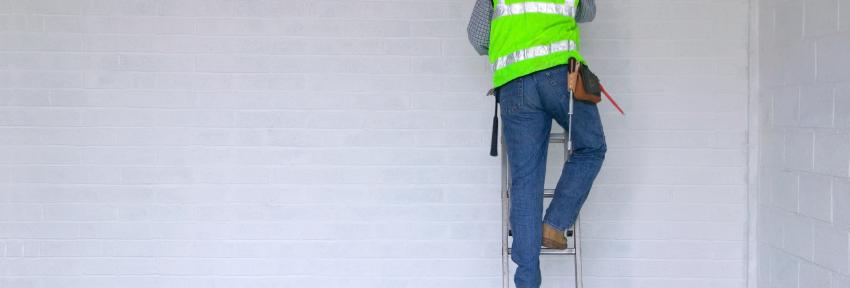
Getting working at height right!
Posted on March 30, 2015
Falls from height are one of the largest causes of death and serious injury in the workplace. With more than 40 people killed and 4,000 suffering major injuries every year, we must get ‘working at height’ right!
People are often fed false information, which on occasion, is used for convenience rather than with a view to reducing risk in a practical way. Here, the HSE dispel some common myths they come across.
At Courtley we are often asked the same kind of questions, so we want to reiterate the correct information and ensure that all those involved continue to promote safe, yet practical working at height.
Myth: You need to be formally ‘qualified’ before using a ladder at work
Reality: No, you do not. You need to be competent. This means having the necessary skills, knowledge and experience to use a ladder properly for the work you will carry out, or, if you are being trained, you work under the supervision of somebody who can perform the task competently. Training often takes place on the job and does not always have to take place in a classroom. What matters is that an individual can apply what they have learned in the workplace.
Myth: HSE have banned the use of ladders on building sites
Reality: No, this isn’t the case. Ladders and stepladders can be a sensible and practical option. They can be used for work at height when the use of other work equipment is not justified because of the low risk and short duration (short duration means working on a ladder for no more than 30 minutes at a time); or when there are existing workplace or site features which cannot be altered.
Myth: I am working at height if I’m walking up and down a staircase at work
Reality: No, you are not. Work at height does not include walking up and down a permanent staircase in a building.
Myth: You need to have two feet and one hand on a stepladder at all times when carrying out a task
Reality: No, this isn’t true. When you need to have both hands free for a brief period to do a job using a stepladder (eg putting a box on a shelf, hanging wallpaper, installing a smoke detector on a ceiling) you need to maintain three points of contact at the working position. This is not just two feet and one hand, it can be two feet and your body (use your knees or chest to help with stability) supported by the stepladder. Ensure a handhold is available to steady yourself before and after.
Myth: HSE has banned the use of ladders to access scaffolds and you will be fined if you ignore this ban
Reality: No, this isn’t true. Ladders can be used for access as long as they are of the right type (ie a suitable grade of industrial ladder), in good condition and effectively secured (tied) to prevent movement. You should ensure they extend at least one metre above the landing point to allow for a secure handhold when stepping off.
To read the full HSE article, please click here.
